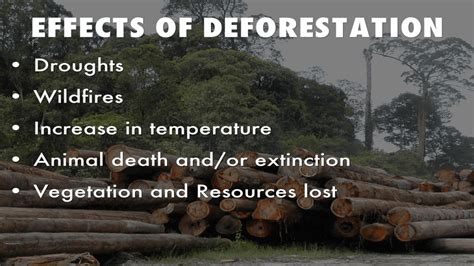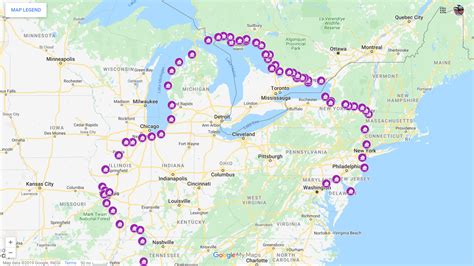Deforestation, the clearance of forests, usually as a result of deliberate human action, has become a significant environmental concern. It is estimated that more than 13 million hectares of forest are lost each year, which is roughly the size of the country of Greece. The impacts of deforestation are multifaceted and far-reaching, affecting not just the biodiversity of the forest ecosystems but also the global climate, soil quality, and, notably, water resources. Water, being a vital component of all ecosystems, is particularly vulnerable to the effects of deforestation. This article explores the ways in which deforestation impacts water, highlighting the intricate relationships between forests, water cycles, and the environment.
Key Points
- Deforestation disrupts the natural water cycle, leading to changes in rainfall patterns and water availability.
- Forests play a crucial role in maintaining water quality by filtering out sediments and pollutants.
- The removal of trees increases soil erosion, which can lead to the silting of waterways and the degradation of water quality.
- Deforestation can alter the local microclimate, affecting the amount of water that evaporates from the soil and vegetation.
- Forests help regulate water flow, preventing sudden peaks in water levels that can lead to flooding and damage to infrastructure.
Disruption of the Water Cycle

One of the most significant impacts of deforestation on water is the disruption of the natural water cycle. Forests act as massive sponges, absorbing and storing water during rainy periods and slowly releasing it during dry periods. This process helps maintain a steady supply of water to rivers and groundwater. When forests are cleared, this regulatory function is lost, leading to more erratic water flows. For instance, a study in the Amazon rainforest found that deforestation led to a 25% reduction in rainfall over the cleared areas, due to the reduced evapotranspiration from trees.
Impact on Water Quality
Forests also play a crucial role in maintaining water quality. Tree roots and the forest floor act as a natural filter, removing sediments and pollutants from the water. Without forests, these pollutants can enter waterways, leading to the degradation of water quality. This not only affects aquatic life but also human health, as water sources become contaminated. For example, in the United States, it is estimated that forested watersheds provide 75% of the nation’s freshwater, highlighting the importance of forest cover in maintaining clean water supplies.
| Forest Type | Water Quality Impact |
|---|---|
| Tropical Rainforests | High risk of water pollution due to intensive agricultural runoff |
| Temperate Forests | Moderate risk, with potential for sedimentation and nutrient pollution |
| Boreal Forests | Low to moderate risk, with concerns over acidification and metal pollution |

Soil Erosion and Silting

Deforestation also leads to increased soil erosion. Without tree roots to hold the soil in place, it can be easily washed or blown away, leading to the silting of rivers and streams. This silting can have devastating effects on aquatic ecosystems, reducing the depth of waterways, altering habitats, and affecting the water’s oxygen levels. In the Yellow River in China, for example, deforestation and subsequent soil erosion have resulted in significant silting, with over 1.6 billion tons of sediment entering the river annually, posing a major threat to both the ecosystem and human settlements.
Alteration of Local Microclimate
Forests contribute to the local microclimate by influencing the amount of water that evaporates from the soil and vegetation. This process, known as evapotranspiration, helps regulate the climate, maintaining cooler temperatures and more stable rainfall patterns. Deforestation can disrupt this balance, leading to warmer temperatures and altered precipitation patterns. A study in Africa found that deforestation resulted in a 2°C increase in local temperatures, further exacerbating water scarcity issues.
Regulation of Water Flow
Finally, forests play a critical role in regulating water flow. By absorbing and slowly releasing water, forests prevent sudden peaks in water levels that can lead to flooding. Without this regulatory function, areas are more prone to extreme flooding events, which can be catastrophic for both human populations and wildlife. The 2010 floods in Pakistan, which affected over 20 million people, were exacerbated by deforestation in the upper catchments of the Indus River, highlighting the critical need for forest conservation to mitigate such disasters.
How does deforestation affect groundwater recharge?
+Deforestation can significantly reduce groundwater recharge. Forests help to recharge groundwater through the infiltration of rainfall. Without forests, more rainfall runs off the surface, leading to less water infiltrating the soil and recharging groundwater aquifers.
Can reforestation efforts mitigate the impacts of deforestation on water resources?
+Yes, reforestation can help mitigate some of the impacts of deforestation on water resources. Reforestation efforts can help restore the natural water cycle, improve water quality, and reduce soil erosion. However, the success of these efforts depends on the type of trees planted, the scale of the reforestation, and the time allowed for the ecosystem to recover.
What role can sustainable forest management play in protecting water resources?
+Sustainable forest management is crucial for protecting water resources. Practices such as selective logging, maintaining forest cover, and protecting water-sensitive areas can help ensure that forests continue to provide their regulatory functions while also meeting human needs for timber and other forest products.
In conclusion, the impact of deforestation on water resources is complex and multifaceted. Understanding these impacts is essential for developing effective strategies to protect and conserve our water resources. Through sustainable forest management, reforestation efforts, and a deeper appreciation of the role forests play in the water cycle, we can work towards mitigating the adverse effects of deforestation and ensuring a more sustainable future for all.



